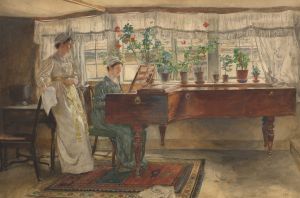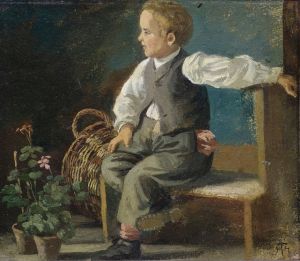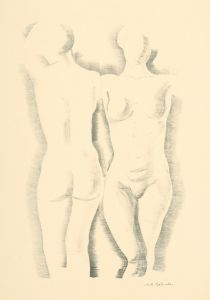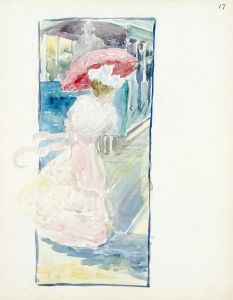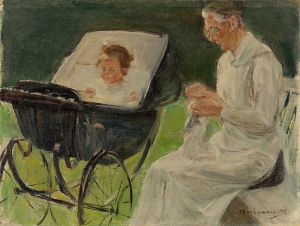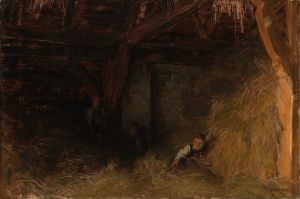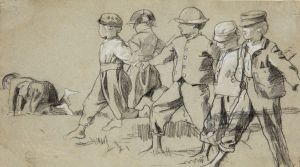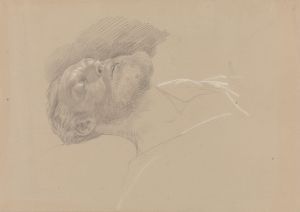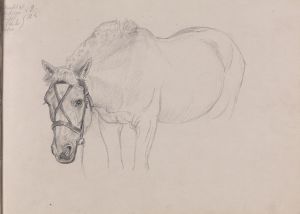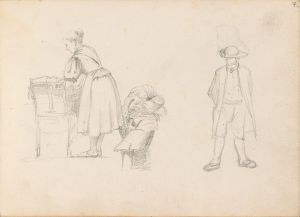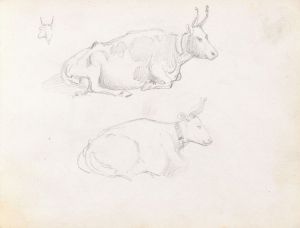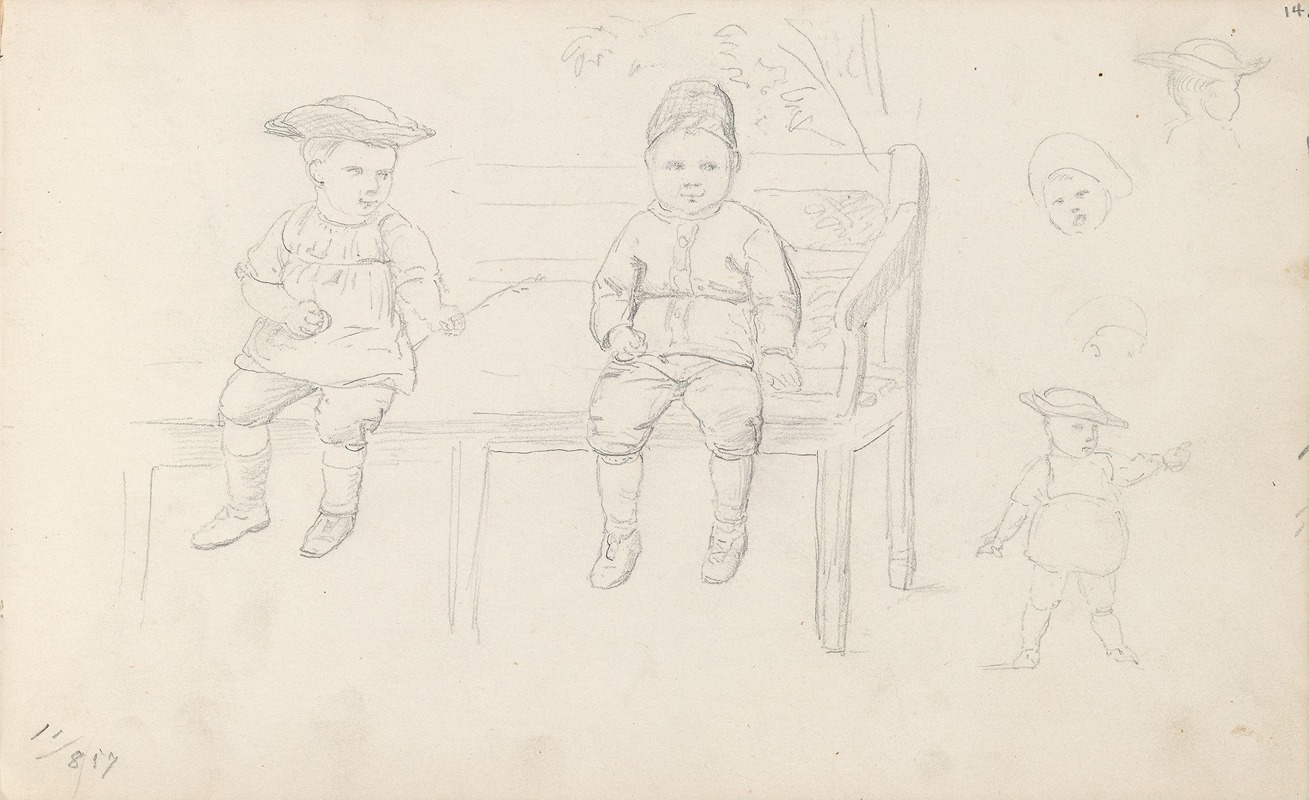
To guttebarn på en benk; barnestudier
A hand-painted replica of Adolph Tidemand’s masterpiece To guttebarn på en benk; barnestudier, meticulously crafted by professional artists to capture the true essence of the original. Each piece is created with museum-quality canvas and rare mineral pigments, carefully painted by experienced artists with delicate brushstrokes and rich, layered colors to perfectly recreate the texture of the original artwork. Unlike machine-printed reproductions, this hand-painted version brings the painting to life, infused with the artist’s emotions and skill in every stroke. Whether for personal collection or home decoration, it instantly elevates the artistic atmosphere of any space.
"To guttebarn på en benk; barnestudier" (Two Boys on a Bench; Studies of Children) is a painting by the Norwegian artist Adolph Tidemand. Adolph Tidemand (1814–1876) is one of Norway's most renowned painters, known for his detailed and realistic depictions of Norwegian folk life and traditions. His works often capture the essence of rural Norway, portraying its people, customs, and landscapes with great authenticity and sensitivity.
The painting "To guttebarn på en benk; barnestudier" is a fine example of Tidemand's focus on everyday life and his ability to convey the innocence and simplicity of childhood. The artwork features two young boys seated on a bench, engaged in a moment of quiet contemplation or interaction. The setting is likely rural, consistent with Tidemand's other works that often depict scenes from Norwegian peasant life.
Tidemand's attention to detail is evident in the careful rendering of the boys' clothing, expressions, and posture. The boys are dressed in typical 19th-century rural attire, which adds to the authenticity of the scene. The artist's use of light and shadow enhances the three-dimensional quality of the figures, making them appear lifelike and tangible.
Adolph Tidemand studied at the Academy of Fine Arts in Copenhagen and later at the Düsseldorf Academy, where he was influenced by the Düsseldorf School of painting. This school emphasized meticulous detail, realistic representation, and often romanticized depictions of everyday life. Tidemand's training and influences are reflected in "To guttebarn på en benk; barnestudier," where his technical skill and keen observation of human nature are on full display.
Throughout his career, Tidemand collaborated with other artists, most notably Hans Gude, with whom he created several famous landscape and genre paintings. However, "To guttebarn på en benk; barnestudier" is a solo work that highlights Tidemand's individual talent in capturing the subtleties of human expression and interaction.
The painting is part of a broader tradition of genre painting in the 19th century, where artists sought to depict scenes from everyday life with a sense of realism and empathy. Tidemand's works, including this painting, played a significant role in shaping Norwegian national identity during a time when the country was seeking to assert its cultural independence.
"To guttebarn på en benk; barnestudier" is housed in the National Gallery in Oslo, Norway, where it continues to be appreciated for its artistic merit and historical significance. The painting remains a testament to Adolph Tidemand's skill as an artist and his contribution to Norwegian art and culture.





